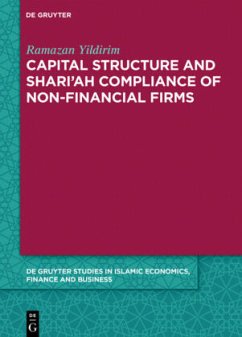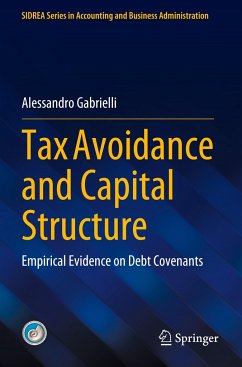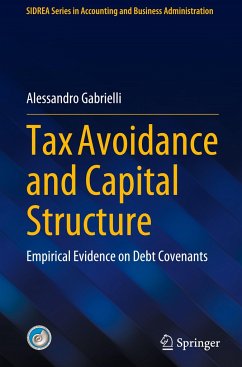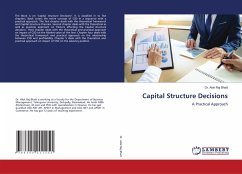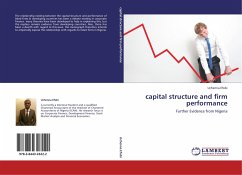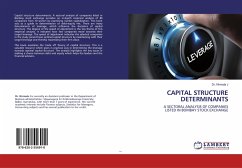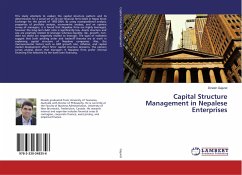
Capital Structure Management in Nepalese Enterprises
Versandkostenfrei!
Versandfertig in 6-10 Tagen
27,99 €
inkl. MwSt.

PAYBACK Punkte
14 °P sammeln!
This study attempts to explain the capital structure pattern and its determinants for a penal set of 20 non-financial firms listed in Nepal Stock Exchange for the period of 1992-2004. By using ecompositional analysis, properties of portfolio analysis, econometric analysis, and an opinion survey of managers, it is found that Nepalese firms are highly leveraged, however the long-term debt ratio is significantly low. Assets structure and size are positively related to leverage whereas liquidity, risk, growth, non-debt tax shield are negatively related to leverage. The signs of estimates suggest t...
This study attempts to explain the capital structure pattern and its determinants for a penal set of 20 non-financial firms listed in Nepal Stock Exchange for the period of 1992-2004. By using ecompositional analysis, properties of portfolio analysis, econometric analysis, and an opinion survey of managers, it is found that Nepalese firms are highly leveraged, however the long-term debt ratio is significantly low. Assets structure and size are positively related to leverage whereas liquidity, risk, growth, non-debt tax shield are negatively related to leverage. The signs of estimates suggest that both pecking order and tradeoff theories are at work in explaining capital structure of Nepalese companies. Also, the macroeconomic factors such as GDP growth rate, inflation, and capital market development affect firms' capital structure decisions. The opinion survey analysis shows that managers in Nepalese firms prefer internal financing first followed by the bank loan financing.






